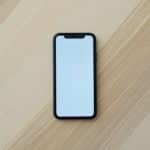In today’s digital age, smartphone cameras have become incredibly advanced, allowing anyone to capture stunning photos without professional equipment. However, when it comes to low-light photography, achieving high-quality images can be a challenge. This article aims to guide you through configuring your smartphone for optimal use in low-light conditions, regardless of whether you’re using an iPhone Pro, Samsung Galaxy Ultra, or an Android device.
Understanding Low-Light Photography
Low-light photography involves capturing images in settings where natural light is scarce, such as during nighttime or in dimly-lit environments. While your smartphone camera can handle various lighting conditions, low-light scenarios require specific adjustments to ensure your photos come out clear and vibrant.
Sujet a lire : Can You Use Your Smartphone to Control a Smart Thermostat?
Smartphone cameras are continually improving, with features such as Night Mode and Pro Mode designed to enhance your low-light photography experience. However, understanding and configuring specific settings can make a significant difference in the quality of your shots.
Utilizing Night Mode
Most modern smartphones come equipped with a Night Mode feature. This mode is specifically designed to enhance low-light photography by adjusting the exposure and reducing noise in your images. Whether you’re using an iPhone Pro, Samsung Galaxy Ultra, or another smartphone model, enabling Night Mode can drastically improve your photos.
Cela peut vous intéresser : Can You Use Your Smartphone as a Universal Remote for All Your Home Devices?
When you activate Night Mode, your smartphone will automatically adjust several settings, including exposure time and ISO. This helps capture more light and produce a clearer image. On devices like the Samsung Galaxy Ultra, Night Mode can be particularly effective, allowing you to capture detailed photos even in near darkness.
However, while Night Mode is a powerful tool, it’s essential to understand how to use it effectively. Holding your phone steady is crucial, as the extended exposure time can easily result in blurry images if there’s any movement. Consider using a tripod or resting your phone on a stable surface to avoid shake.
Mastering Pro Mode Settings
For those who want more control over their low-light photography, Pro Mode is the way to go. This mode allows you to manually adjust various settings on your smartphone camera, giving you the flexibility to tailor your shots to specific lighting conditions.
Adjusting ISO
ISO measures the sensitivity of your camera’s sensor to light. In low-light conditions, increasing the ISO can help brighten your image. However, too high of an ISO can introduce noise, which can degrade the quality of your photo. Start with a moderate ISO setting and adjust as needed, aiming to find a balance between brightness and clarity.
Shutter Speed
Shutter speed determines how long your camera’s sensor is exposed to light. In low-light settings, a slower shutter speed allows more light to reach the sensor, resulting in a brighter image. However, similar to Night Mode, a slower shutter speed increases the risk of motion blur. Ensure your phone is stable, especially when using slower shutter speeds.
White Balance
White balance adjusts the color temperature of your image, ensuring that colors appear natural in different lighting conditions. In low-light settings, incorrect white balance can result in images that are too warm or too cool. Experiment with the white balance settings to find the one that best represents the actual scene.
Exploring Camera Apps for Enhanced Control
While the default camera app on your Android or iPhone Pro is powerful, third-party camera apps can offer even more control over your low-light photography. Apps like Camera+ for iPhone and Open Camera for Android provide additional settings and features that can help you capture better photos in low-light conditions.
These apps often include advanced controls for ISO, shutter speed, and white balance, allowing you to fine-tune every aspect of your shot. Additionally, some apps offer features like manual focus, histogram displays, and RAW image capture, which can be beneficial for achieving high-quality results.
Recommended Third-Party Camera Apps:
- Camera+ (iPhone): Offers a range of manual controls and presets for various lighting conditions. Its Night Mode and long exposure capabilities can significantly enhance your low-light photography.
- Open Camera (Android): A free, open-source app that provides extensive manual controls, including ISO, shutter speed, and white balance adjustments. It’s a versatile option for those looking to improve their low-light shots.
Leveraging Hardware Enhancements
While software settings and apps play a crucial role in low-light photography, hardware can also make a significant difference. Investing in additional accessories can help you capture clearer, more detailed photos in challenging lighting conditions.
Tripods and Stabilizers
As mentioned earlier, keeping your smartphone steady is vital for achieving sharp images in low-light conditions. A tripod or a stabilizer can help eliminate camera shake, allowing you to use longer exposure times without introducing blur.
External Lenses
Adding an external lens to your smartphone can enhance its low-light performance. Wide-angle and macro lenses, such as the Canon USM or Macro STM, can help you capture more light and detail, improving the overall quality of your photos. These lenses can be particularly useful when photographing landscapes or intricate details in low-light settings.
External Lights
Sometimes, the available light is not enough to capture a clear photo. In such cases, using an external light source, like an LED ring light or a small portable light, can provide the additional illumination needed to enhance your image. These lights can be adjusted in intensity and color temperature, helping you achieve the desired lighting effect.
Post-Processing for Low-Light Photos
Even with the best settings and accessories, post-processing can further enhance your low-light photos. Editing software and apps can help you fine-tune various aspects of your images, bringing out details and improving overall quality.
Editing Apps
There are numerous editing apps available for both iPhone and Android that offer a range of tools for enhancing low-light photos. Apps like Adobe Lightroom, Snapseed, and VSCO provide advanced editing features, allowing you to adjust exposure, contrast, saturation, and more.
Noise Reduction
One common issue with low-light photography is noise, which can make your photos look grainy. Most editing apps include noise reduction tools that can help minimize this issue, resulting in cleaner, more polished images. Be cautious not to overdo it, as excessive noise reduction can lead to a loss of detail.
Enhancing Details
Use sharpening tools to enhance the details in your photos. This can help bring out textures and features that may have been lost in the original image. Additionally, adjusting the clarity and structure settings can add depth and dimension to your photos.
Capturing stunning photos in low-light conditions with your smartphone is an achievable goal with the right knowledge and tools. By understanding and utilizing features like Night Mode and Pro Mode, adjusting key settings such as ISO, shutter speed, and white balance, and leveraging additional hardware and editing tools, you can significantly improve the quality of your low-light photography.
Whether you’re using an iPhone Pro, Samsung Galaxy Ultra, or another Android device, these tips and techniques will help you make the most of your smartphone camera in challenging lighting conditions. Remember, practice makes perfect, so don’t hesitate to experiment with different settings and tools to find what works best for your unique photography style.
With these strategies in hand, you’re well-equipped to capture stunning, high-quality photos, even in the darkest of environments. Happy shooting!






